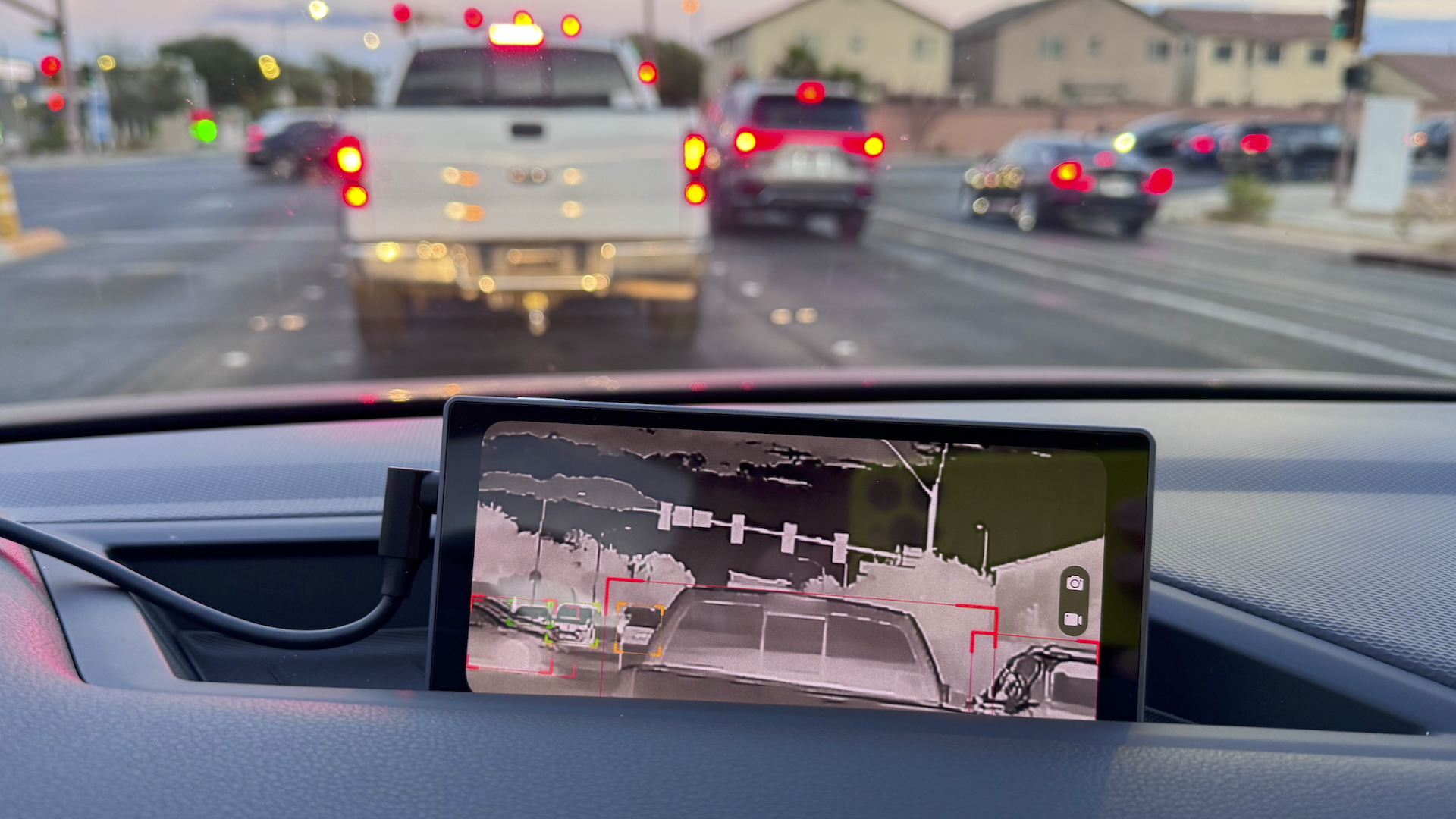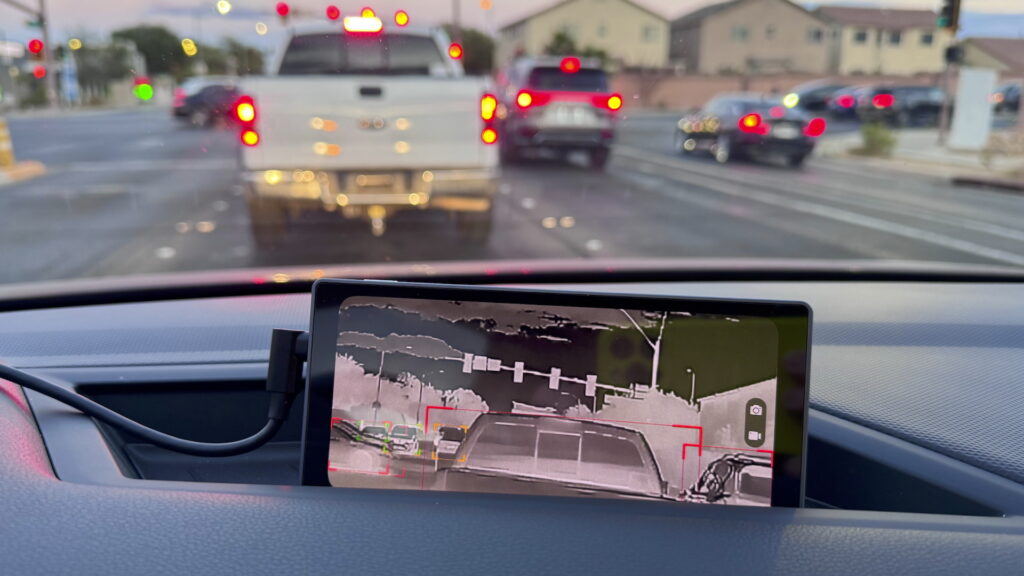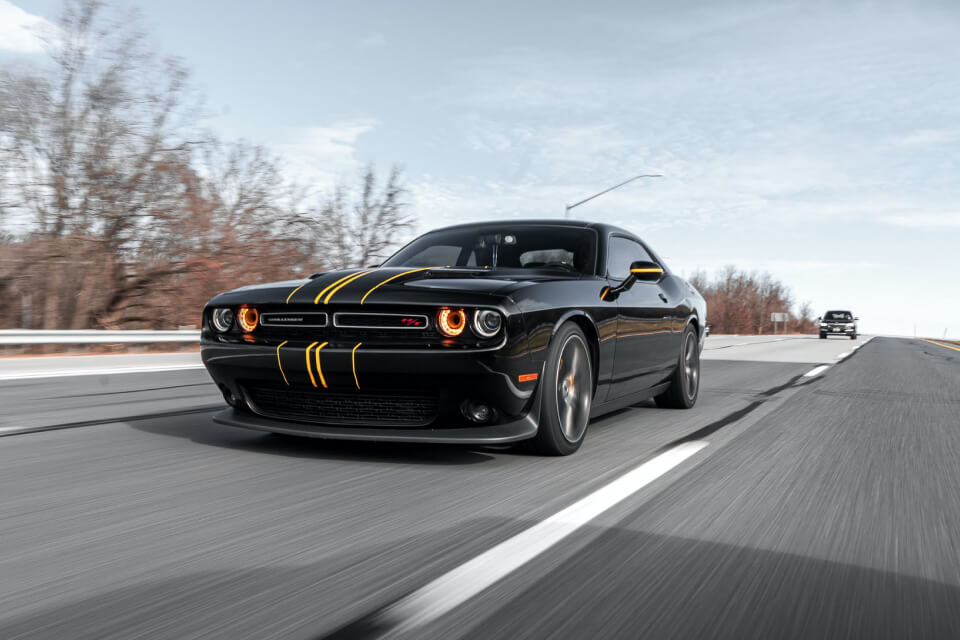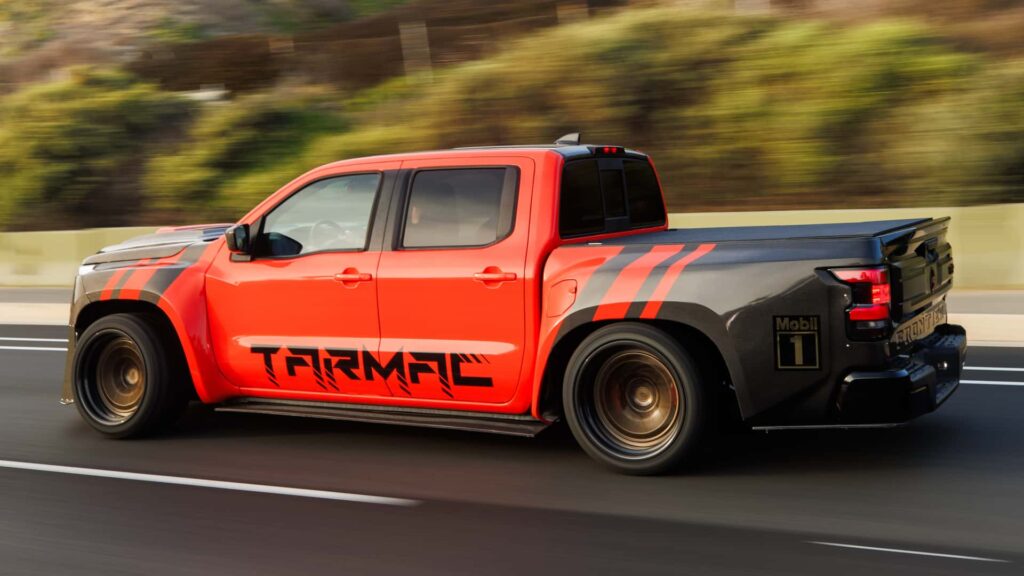
As the meme says, “Always be yourself. Unless you can be Batman. Then, always be Batman.” Those really are words to live by. The NV300 Max will help you be one step closer to the Dark Knight by allowing you to see in a spectrum other than visible light. I have driven a lot of cars with night vision and all of them struggled with integration. This one is no different, but the fact this works on any car has pros and cons. Some are more polarizing than others.
I want to make it perfectly clear that I am testing a pre-production unit. By the time this gets published, the Kickstarter program will be in full swing. I’ve reviewed countless pre-production cars in my career with mixed results. Some were nearly production-ready and if I wouldn’t have been told, I wouldn’t have known they weren’t production versions. Others were so pre-production, they were jettisoning trim pieces while being driven and whole systems didn’t work. This seems fairly close to production, although given my experience with anything computerized, I know software updates are a continuous thing over any product’s lifespan and I’m sure this is no different.
The Bottom Line
This is the best automotive thermal imaging system I have ever used. It’s also the most affordable (I’ve used) with a normal list price of $649.00, but if you get it on Kickstarter, it’s only $399.00. In the luxury cars I’ve driven with integrated systems, it’s normally a $2,000 or so option. It picks up pedestrians, cyclists, and animals. It can even distinguish between them quite accurately. The NV300 Max thermal camera also provides warnings for forward collisions and has the ability to track other vehicles in front of you. It records footage and will autosave what it considered important if you don’t do it yourself. It works as a dashcam, but is more about the real-time use case.
Now, let’s talk about the elephant in the room, or more accurately, the hump on the roof of my car. I have a few neighbors who seem to relish bolting, sticking, adhering, or otherwise attaching all sorts of aftermarket sh-stuff to their vehicles. Whether it’s overlanding ladders, auxiliary lights, or the Corvette guy who just seems to buy a new stick-on chrome piece every month. I’m not like those people.
I don’t like additional stuff on the outside of my car. I’ve even de-badged several of my cars in the past. I have a feeling many of you out there can’t imagine having a plastic box, even a well-designed one, stuck on your car’s roof—the wiring is even harder to swallow.
On the inside, the screen is not only a bit non-conforming with the rest of the interior, but in the short amount of time I tested the NV300 Max, I had trouble blending it into my driving workflow. I am confident that if I took the time, I could integrate the cameras into the grille and it would be virtually invisible outside of the car. I could also do a much better job inside the car as well. If I could get to the point where I could use the screen inside the car without it being a distraction while driving is yet to be determined.
| NV300 Max Thermal Camera | |
|---|---|
| Performance | 9/10 |
| Value(With Kickstarter) | 9/10 |
| Appearance | 5/10 |
| Ease Of Use | 7/10 |
| Overall | 7.5/10 |
It Wouldn’t Look Out Of Place On The Tumbler
I wanted my installation of the NV300 Max to be as temporary as possible. That’s why you see gaffer tape holding things down. The camera unit for the roof has fairly strong magnets. But if you’re installing this on a car you plan to leave it on, it also has 3M foam tape on the bottom. This is the same stuff you use for spoilers and trim pieces. Once it’s on, it will take work to remove.
The kit also includes self-adhesive wire channels to run the cable across the roof and into the car. I chose to run it down the A-pillar, along the windshield, in through the rain tray, and then back through the door jamb into the car. For something more permanent, once I got into the rain tray I could have found a grommet that got me through the firewall. That would be a lot cleaner. I sat the screen in a storage tray in my dash. The aluminum mount has adhesive on the bottom and the screen unit is held magnetically. Everything is powered with a plug in the 12V socket, and the instructions specifically state, not to hardwire it. My wiring is atrocious, don’t be like me, tuck it all away.
The display is also the control unit for the system. It’s a 6.4-inch OLED touchscreen. If someone just handed it to me and said it was a new Android smartphone, I would believe them. It uses a USB-C connection into the screen, but the other cables use small, threaded, pin and sleeve connectors. All of the hardware feels well-made and durable.
The Verdict: Using Bat Vision In The Real World
For the sake of accuracy: Batman, to be true to his namesake, uses sonar to see in the dark and remote mapping. “Yes, Mr Wayne, like a submarine.” The NV300 Max uses both a standard visual camera and a vanadium oxide (VOx) thermal imaging sensor(camera). The visual camera has a 120° while the thermal camera is 25° in the horizontal and 19° in the vertical. The visual system is wide enough to work well as a dash cam. The night vision is tighter focused to be effective at looking down the road. And it is very effective.
My neighborhood has sidewalks separated from the road with a line of trees. The NV300 Max thermal camera can pick out pedestrians and dogs from between the trees. Not only do you see them as orange and yellow figures on the screen, but they are highlighted with colored frames as well. That’s the second part of what makes this unit so effective. It uses an AI processor (and yes, it hurts me more to type those two tortured letters than it does for you to read them) to pick out what the heat signatures are. It recognizes cars and will highlight them in different colors based on range. It isn’t in the literature, but it seems to recognize who is coming towards you vs moving away. Honestly, seeing cars isn’t the important thing for me, this unit is all about pedestrians, cyclists, and animals.
I had this unit on my car for Halloween. It picked out kids in the park in costumes that you would assume would block their heat signature. It showed me small dogs running around when my eyes only picked up on an irresponsible pet owner with an off-leash animal. And, like I said earlier, this system works better than any I’ve used that came factory-installed.
There’s always a “but,” isn’t there? Even with the big screen sitting on the dash, I found it distracting to take my focus off the road. I did turn off the car highlighting and that helped a lot. That way, the screen only highlights people and animals. They pop out on the screen and you can see them in the corner of your eye. At some point, augmented reality windshields will change the way we drive.
We also need to talk about the integration of the camera unit. Or maybe, the lack of integration. For some, this won’t be an issue. If you already have antennae, and racks, and lights, and everything else you can find on the offroading website hanging off your “rig,” what’s one more thing? For those that do have an issue with the aesthetics—that’s me—I’m certain that I can remove the sensor unit from the big housing and hide it in one of my grilles, or even put it in one of the blanks for foglights. I’m still not sure if there’s a better way or place to mount the screen.
A heads-up display seems like a good idea. But I’ve used those in the past and you end up watching the world through a phone-sized image while driving. Maybe training yourself just to watch for the color change on the screen and get a feel for where that is compared to the real world is the answer.
This is an extremely useful tool. I have to imagine people who live in more rural areas with wild animals would find this even more useful than myself who’s just watching for joggers with Labradoodles. I can’t fault the value or the quality; it may just take more work to figure out a good installation and ultimately, just more time to learn how to properly use it while driving.


